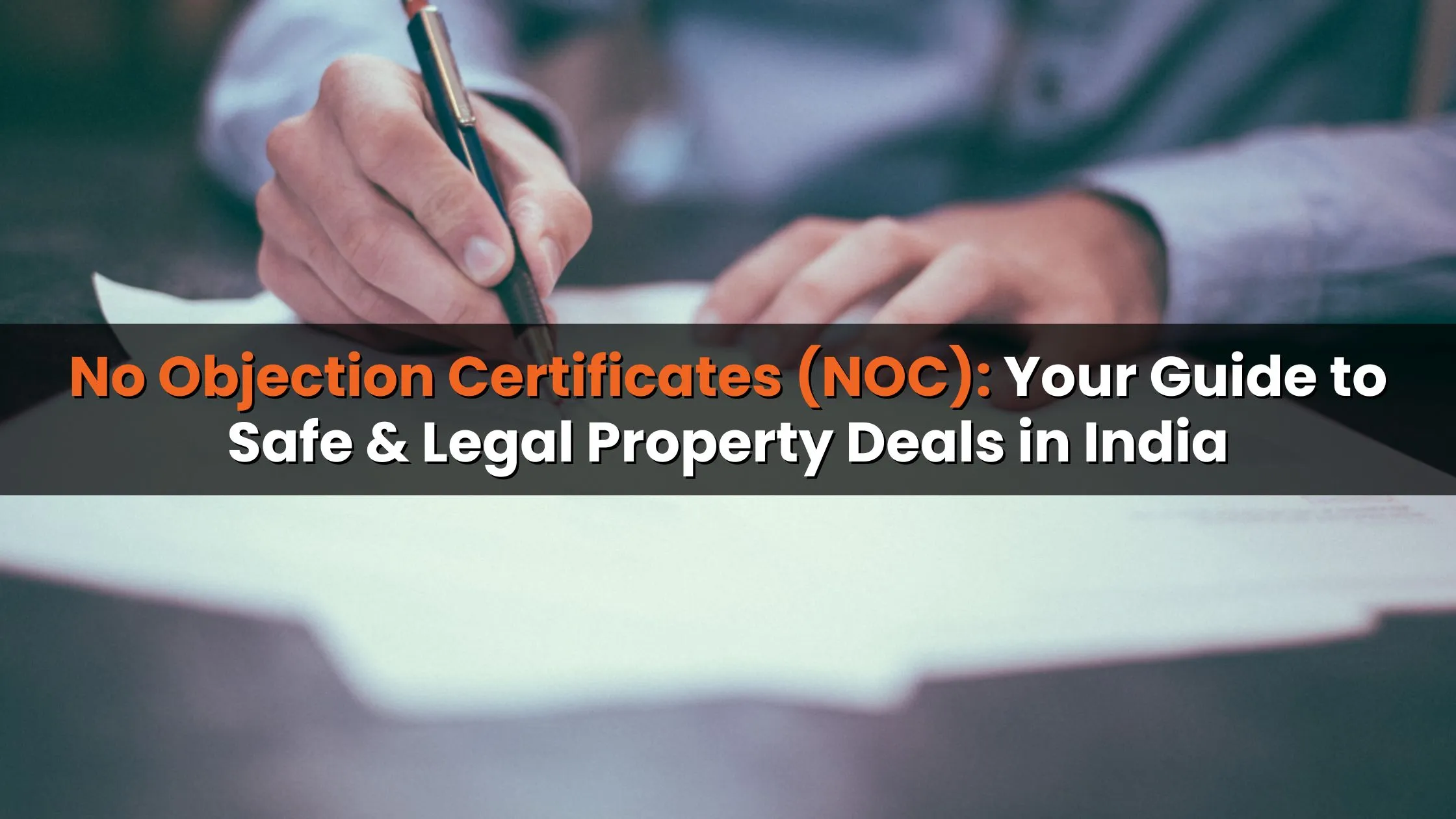Table of Content
A Sale Deed is arguably one of the most important documents in a property transaction. In addition to being a valuable document, it definitively proves that ownership transferred from the seller to the buyer, and is legal, enforceable, and binding upon each party to them. This article discusses the definition, importance, essential elements, rights and obligations of the parties involved in the Sale Deed, and a guide to this important document.
What is a Sale Deed?
It is a legal document that completes the transaction transferring a property from a seller to a buyer concerned with an agreed payment. This document is executed only after all of the conditions of the sale have been satisfied and the price for the property has been completely paid.
The Sale Deed is important in real estate transactions and is the legal transfer of ownership. It establishes that the Buyer is legally the owner of the property and protects the Buyer from future ownership issues.
Also Read: Encumbrance Certificate: A Complete Guide for Property Buyers
Importance of a Sale Deed
A Sale Deed is of extreme importance in property dealings for the following reasons:
1. Proof of Ownership
- A registered Sale Deed will serve as a legal document and hence provide conclusive proof of the buyer’s ownership.
2. Legal Protection
- It can protect both the buyer and the seller against possible ownership disputes or claims.
3. Legally Required Registration
- Under the Indian Registration Act, 1908, a Sale Deed must be registered for the property transaction to be legally enforceable.
4. Further basis for all future dealings
- It will serve as the basis for any future dealings related to the property including; selling, inheritance, or any legal disputes.
Key Elements of a Sale Deed
To ensure its validity, a Sale Deed includes several essential components:
1. Title and Parties
- Details of both buyer and seller, including their names and addresses.
- A detailed description of the property being transferred.
2. Terms and Conditions
- The agreed sale price.
- The payment schedule and mode of payment.
- Penalties or clauses for breach of contract, if any.
3. Encumbrance Clause
- A statement ensuring the property is free from any legal liabilities, such as disputes, loans, or unpaid dues.
4. Possession Clause
- Specifies the date and conditions under which possession of the property will be handed over to the buyer.
5. Signatures and Witnesses
- The document must bear the signatures of both the buyer and seller, attested by at least two witnesses.
6. Registration Details
- Includes the date and location of the document’s registration.
Rights and Responsibilities of the Parties
Buyer’s Rights
- To receive the property free from any legal disputes or liabilities.
- To obtain clear title ownership upon full payment.
- To inspect property-related documents before signing the Sale Deed.
Buyer’s Responsibilities
- To pay the agreed sale amount within the stipulated timeline.
- To verify the property’s legal status and ensure all dues are cleared.
- To register the Sale Deed with the sub-registrar’s office for legal validity.
Seller’s Rights
- To receive full payment as agreed in the contract.
- To demand adherence to all contractual terms by the buyer.
Seller’s Responsibilities
- To deliver the property in the agreed condition.
- To provide all necessary property-related documents.
- To execute and register the Sale Deed to finalize the transaction.
Steps to Register a Sale Deed
Registering a Sale Deed is crucial to make the transaction legally binding. Here are the steps involved:
1. Drafting the Sale Deed
- Consult a legal expert to draft a comprehensive Sale Deed, ensuring all terms and conditions are clearly defined.
2. Payment of Stamp Duty and Registration Fee
- The buyer is responsible for paying applicable charges, which vary depending on the state’s regulations.
3. Execution of the Deed
- The Sale Deed must be signed by both parties and attested by witnesses.
4. Registration at Sub-Registrar’s Office
- Submit the signed document at the sub-registrar’s office for registration. Both parties must be present with valid identification.
Also Read: Leave and License Agreement: Key Details You Must Know
Common Pitfalls to Avoid
While executing a Sale Deed, parties should avoid:
1. Incomplete Documentation
- Ensure all property-related documents are in order before finalizing the Sale Deed.
2. Ambiguity in Terms
Clearly outline all terms and conditions to prevent misunderstandings or disputes.
3. Skipping Legal Consultation
Engage a legal expert to avoid errors or oversights in drafting and execution.
4. Delayed Registration
Promptly register the Sale Deed to make the transaction legally binding.
Conclusion
A Sale Deed isn't simply a formal agreement, but in fact, it is a legal foundation for property ownership. It's important because it protects the rights of the buyer and the seller, while providing a valid legal transaction.
It is important to pay attention to its details, its rights and obligations as a party to the transaction, when involved in a property transaction. The parties - the buyer and seller - should seek legal help for the drafting and registration of the Sale Deed so both the buyer and seller know their rights, obligations and comply with the law.
The parties can proceed further with confidence - the Sale Deed is a documentable series of steps which provides certainty for a party in the transaction. As long as the parties stay consistent in their documents and terms, they should be able to successfully navigate through a property transaction.
Follow AquireAcers Whatsapp Channel to Stay Updated With The Latest Real Estate News











Ans 1. A Sale Deed is a legal document that completes the transfer of property ownership from a seller to a buyer upon payment of the agreed price.
Ans 2. It provides legal proof of ownership, protects against disputes, and serves as a basis for future dealings, including selling, inheritance, or legal matters.
Ans 3. Details of the buyer, seller, and property. Terms and conditions of the sale. Encumbrance clause ensuring no liabilities. Possession clause with the date of handover. Signatures of both parties and witnesses. Registration details.
Ans 4. To receive the property free of disputes. To obtain a clear title. To inspect property-related documents.
Ans 5. Paying the agreed amount on time. Verifying the legal status of the property. Registering the Sale Deed for legal validity.
Ans 6. To receive full payment. To expect adherence to contractual terms by the buyer.
Ans 7. Delivering the property in the agreed condition. Providing all necessary documents. Executing and registering the Sale Deed.
Ans 8. A registered Sale Deed ensures enforceability under the law, protects both parties from ownership disputes, and confirms the buyer’s ownership rights.